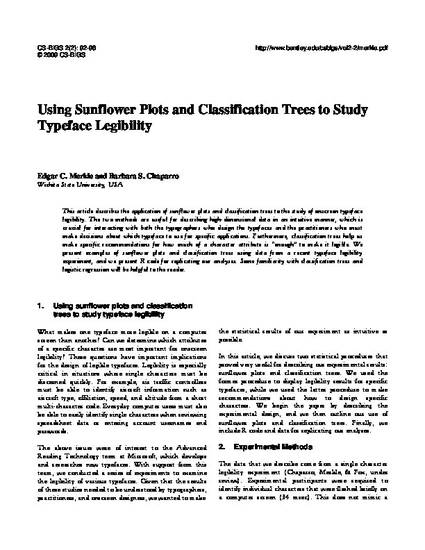
This article describes the application of sunflower plots and classification trees to the study of onscreen typeface legibility. The two methods are useful for describing high-dimensional data in an intuitive manner, which is crucial for interacting with both the typographers who design the typefaces and the practitioners who must make decisions about which typeface to use for specific applications. Furthermore, classification trees help us make specific recommendations for how much of a character attribute is “enough” to make it legible. We present examples of sunflower plots and classification trees using data from a recent typeface legibility experiment, and we present R code for replicating our analyses. Some familiarity with classification trees and logistic regression will be helpful to the reader.
Available at: http://works.bepress.com/barbara-chaparro/69/

Dr. Chaparro was not affiliated with Embry-Riddle Aeronautical University at the time this article was published.